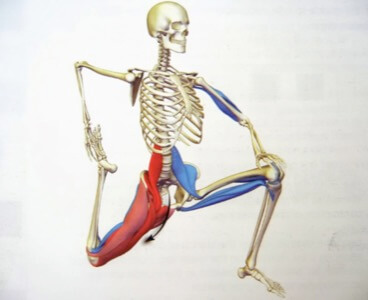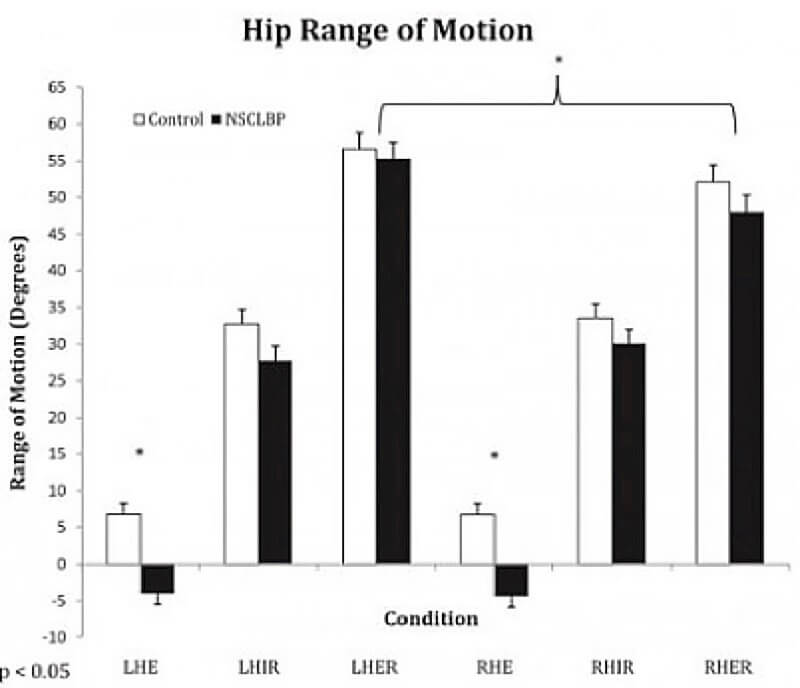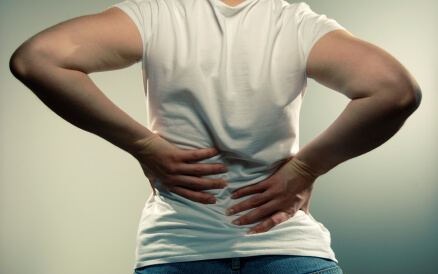
Low back pain
Low back pain continues to be the most common complaint in the health industry that limits individuals.
Rehabilitation of the low back is transitioning from focusing on reducing localised pain and therefore symptoms to a biomechanical approach looking at how other areas of the body such as the hip impact low back pain.
This biomechanical approach is effective in finding the movement dysfunction to prevent further aggravation of the injury rather than simply relieving symptoms.
Hip mobility and low back pain
A recent study highlights the influence of hip mobility on low back pain. Hip extension mobility was evaluated in two groups, those with and without low back pain and found:
- Hip extension in those with low back pain = -4.16 degrees
- Hip extension in those without low back pain = 6.78 degrees
A total loss of 10 degrees of hip extension in those with low back pain.

Loss of hip extension relates to low back pain
There is a strong correlation between loss of hip extension and low back pain with as little as 10 degrees being significant.
A large majority of the population sit for some time each day, increasing as we age. Among many things, this results in tight hip flexors and anterior pelvic.
With recreational activities aside like sports and running this anterior tilt posture with tight hip flexors causes a loss of hip extension mobility resulting in the low back taking the load through hyperextending. This occurs whilst simply walking and in a standing posture.
The results above highlight those with low back pain have negative hip extension meaning they can’t extend to neutral. As we know the body will compensate, hips don’t extend? No problem we will extend our spine more.
This compensatory pattern could potentially lead to overuse, fatigue and altered motor activation patterns in the hip and lumbar spine leading to low back pain and injury. Thus, highlighting the importance of hip joint range of motion.
There are many techniques to improve hip flexor length. One effective method is the true hip flexor stretch in a ½ kneeling or side-lying position. Important things to note whilst performing this stretch is that there should be no compensatory low back extension and those in an anterior pelvic tilt posture should focus on posterior pelvic tilt.
You can now see how mobility in hip in extension can improve your outcomes. Once you have started to gain some hip mobility there is much more work to be done on gluteal and core control. Focusing on hip extension mobility and strength should be one of the key components in low back pain recovery and prevention.
References
In the moment: Sports medicine Jordana Bieze Foster: Athletes with hip flexor tightness have reduced gluteus maximus activation. Lower Extremity review Vol 6, Number 7 2014
Mills M, Frank B, Blackburn T, et al. Effect of limited hip flexor length on gluteal activation during an overhead squat in female soccer players. J Athl Train 2014;49(3 Suppl):S-83.
Arbanas J, Pavlovic I, Marijancic V, et al. MRI features of the psoas major muscle in patients with low back pain. Eur Spine J. 2013 Sep;22(9):1965-71. doi: 10.1007/s00586-013-2749-x. Epub 2013 Mar 31.
Roach SM, San Juan JG, Suprak DN, Lyda M, Bies AJ, Boydston CR. Passive hip range of motion is reduced in active subjects with chronic low back pain compared to controls. Int J Sports Phys Ther. 2015 Feb;10(1):13-20. Erratum in: Int J Sports Phys Ther. 2015 Aug;10(4):572.
Evans K Refshauge KM Adams R Aliprandi L Predictors of low back pain in young adult golfers: a preliminary study. Phys Ther Sports. 2005;6:122-130.
Mellin G Correlations of hip mobility with degree of back pain and lumbar spinal mobility in chronic low-back pain patients. Spine. June 1988;13(6):668-670. [PubMed]
Nodehi-Moghadam A, Taghipour M, Goghatin Alibazi R, Baharlouei H. The comparison of spinal curves and hip and ankle range of motions between old and young persons. Medical Journal of the Islamic Republic of Iran. 2014;28:74.

